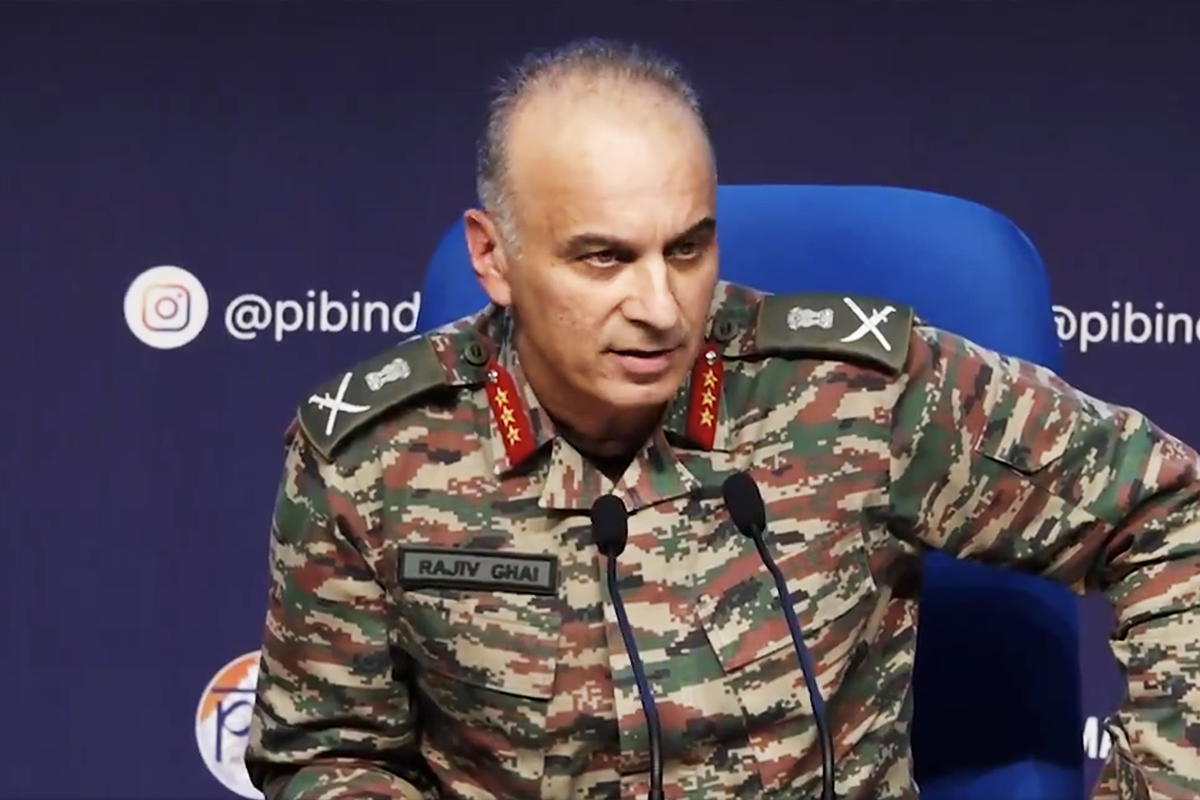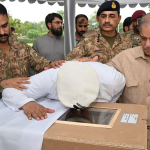In one of the most significant cross-border military operations in recent years, Indian armed forces have eliminated over 100 terrorists in a series of precision strikes under Operation Sindoor, targeting key terror infrastructure in Pakistan and Pakistan-occupied Kashmir (PoK). The operation was launched in retaliation for the brutal April 22 Pahalgam attack that killed 26 civilians, including a Navy officer and a Nepalese national, in Jammu and Kashmir.
Lieutenant General Rajeev Ghai, Director General of Military Operations (DGMO), addressed the media on Sunday, revealing that the strikes were carried out in the early hours of May 7, across nine known terror hubs including Muzaffarabad, Kotli, Bahawalpur, Rawalakot, Bhimber, Neelum Valley, Jhelum, and Chakwal. Over 24 missiles were deployed during the 25-minute operation, which began at 1:05 AM and concluded by 1:30 AM. The strikes involved a coordinated effort by the Indian Army, Air Force, and Navy.
The Indian Air Force led the aerial assault with precision-guided munitions such as laser-designated missiles and satellite-guided glide bombs, while the Navy provided logistical and targeting support. Real-time drone surveillance confirmed extensive damage and high casualty numbers: at least 70 terrorists were killed immediately, with more than 60 others injured.
Among the eliminated were high-profile terror operatives including Yusuf Azhar, Abdul Malik Rauf, and Mudasir Ahmed—figures linked to both the 1999 IC-814 hijacking and the 2019 Pulwama terror attack, which killed 40 CRPF personnel. Some camps were reportedly vacated in anticipation of Indian action, indicating the effectiveness of India’s intelligence and the fear of retribution within terror networks.
Lt Gen Ghai underscored that the mission demonstrated India’s “zero-tolerance” approach to terrorism. “We targeted the perpetrators and planners of terror, with a clear and deliberate intent to dismantle their ecosystem,” he said. The operation, he added, was calibrated to avoid civilian casualties while delivering a decisive blow to Pakistan-backed terror groups.
However, the success came at a cost—five Indian soldiers lost their lives during the operation. On the Pakistani side, reports indicate collateral damage in civilian areas, including religious sites such as Gurudwaras. The situation escalated further when international agencies detected radiation near the Nur Khan Airbase in Rawalpindi, prompting the arrival of a U.S. technical team to assess potential damage to nuclear weapons storage facilities.
The Pahalgam attack that triggered Operation Sindoor involved five heavily armed terrorists targeting tourists in the Baisaran Valley. The incident, which marked a disturbing escalation in anti-civilian violence, led to nationwide outrage and prompted the Indian government to call for an all-party meeting on April 24. Intelligence reports later confirmed the involvement of Pakistan-based terror operatives.
Defence Minister Rajnath Singh condemned the attack as an “act of cowardice,” while Jammu and Kashmir Chief Minister Omar Abdullah called it “unprecedented in brutality against civilians.” The aftermath of the strikes has seen rising tensions across the border, with sporadic shelling reported along the Line of Control. Protests have also erupted in parts of Kashmir, while several tourist destinations in the Valley witnessed shutdowns and evacuations.
The operation has drawn mixed political reactions. While many hailed it as a decisive step against terrorism, opposition leaders questioned the government’s long-term strategy for Kashmir and regional stability. Meanwhile, international responses have largely called for restraint, though many nations have acknowledged India’s right to self-defense in the face of terrorism.
Operation Sindoor, with its precision, speed, and strategic depth, marks a turning point in India’s counter-terror doctrine. It reasserts India’s position that it will act decisively and unilaterally when national security and civilian lives are threatened.













